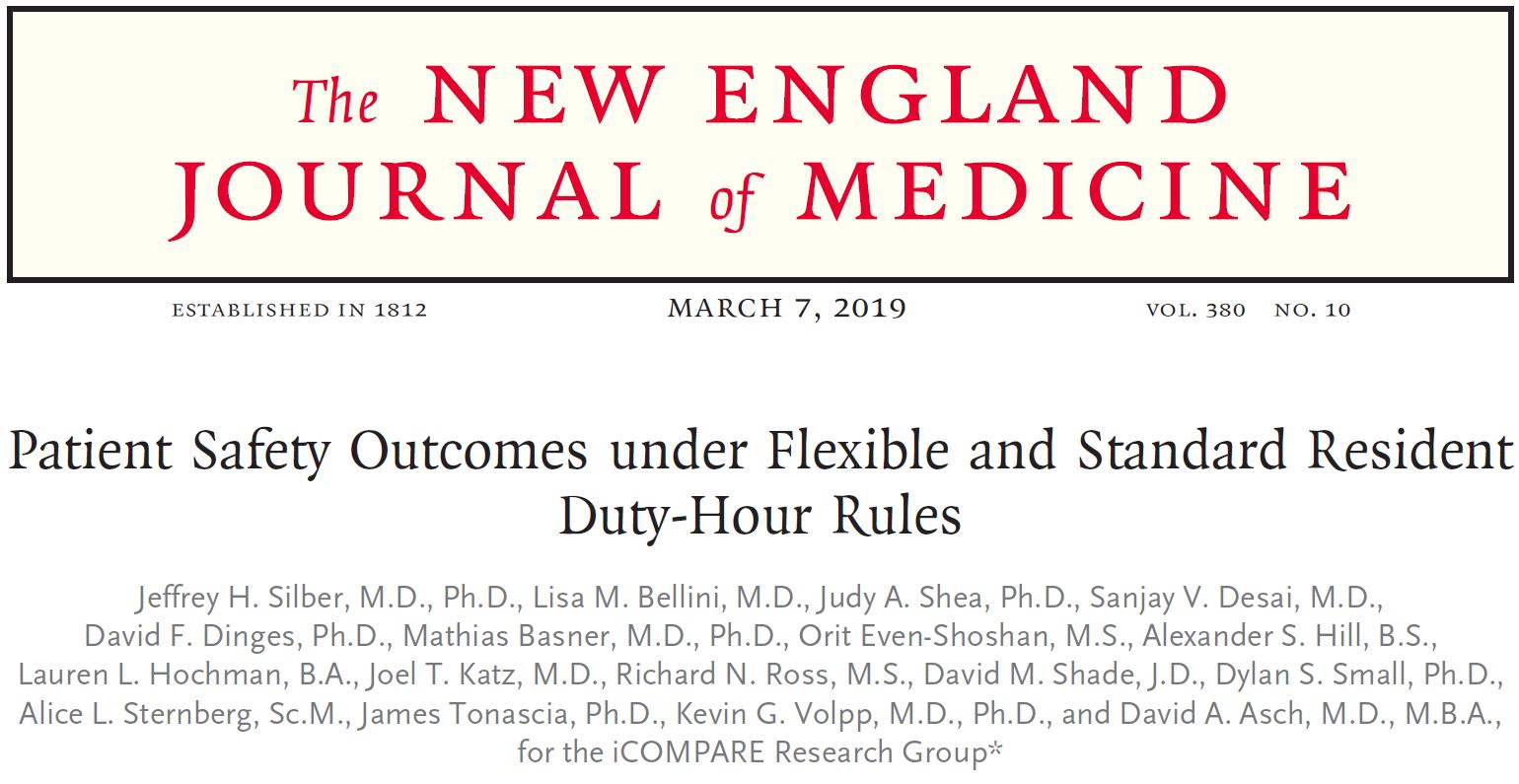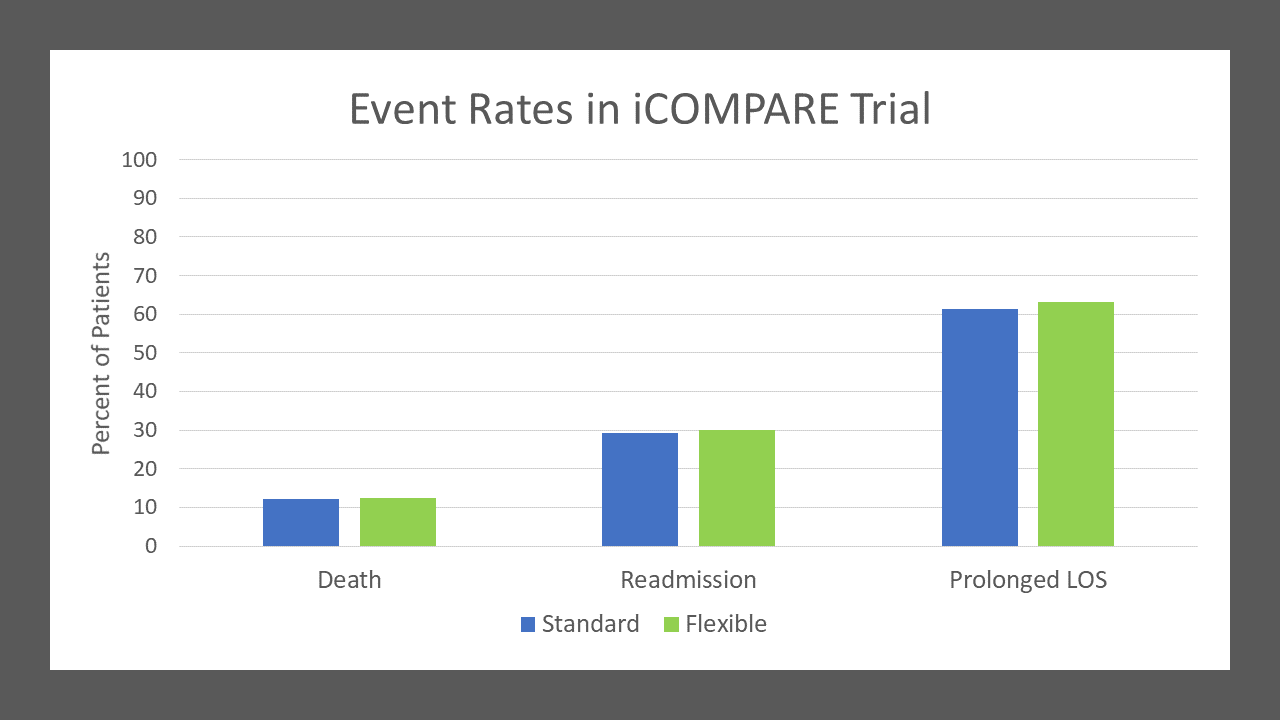Thirty Hour Shifts for Medical Trainees: OK for Patients, Not Great for the Trainee
/A randomized trial found that longer shifts for medical trainees didn’t substantially worsen patient outcomes. But that doesn’t mean we should embrace the practice.
In December 2005, Eliza Long White was an intern in general surgery. She’d been awake for about 30 hours in the hospital when she left to finally go home and get some rest.
“You know when you’re young, you don’t really know what you can or can’t do – you just kind of keep pushing your limits. And you get in the car like you do every day and you think I’m just going to drive home and then you realize - you know - when you wake up and your car is a wreck that you actually can’t do it”.
-Eliza Long White, MD
Dr. White suffered a ruptured spleen and had a splenectomy at the very hospital in which she was training – a stark reminder that the costs of long work hours may not be borne solely by patients.
Times have changed since 2005, and not just because duty-hour rules have limited the amount of time residents can spend in the hospital, but because a robust evidence-based medicine culture has started to evaluate those rules. I was thrilled to see two sister analyses in the New England Journal this week both examining data from a randomized trial of resident work schedules across 63 internal medicine training programs.
This was a cluster randomized trial. Each of the 63 included internal medicine training programs were randomized to the standard work hour rules or “flexible” rules. All residents were still limited to 80 work hours per week, but the standard rules limited shift duration to 16 hours, essentially meaning that a “night float” resident was necessary. The flexible programs could do longer shifts, getting rid of the night float in favor of a “long call” resident, who might be in the hospital for up to 30 hours.
It bears mentioning that just because a program assigned to the flexible intervention could have residents do 30 hour shifts does not mean they had to have residents do 30 hours shifts. It was… flexible. This will become important in a bit.
What you need to know is that 30-day patient mortality was the same among programs randomized to standard or flexible work hours – about 12.5%.
Nor was there a large difference in readmission rates, length of hospital stay, or hospital payments. There was no formal assessment of medical errors, but broadly, patients did just as well when programs used long call shifts or a night float system.
Why no difference? Well it could be that the harm of sleep deprivation is outweighed by the benefit of continuity of care in a long shift – less handoffs is almost certainly better for patients. Or it could be that the structures we have in place to support residents – well-rested attending physicians like me and, certainly more importantly, nurses, were not subjects of this trial.
How did the residents fare? Not too bad. Averaged over time, residents in the standard programs got the same amount of sleep as residents in the flexible programs – about 6-7 hours per night.
But that’s on average. Residents on those long 30 hour calls slept a lot less than their shift-working counterparts – only about 5 hours. And 40% of them said they needed some effort to stay alert or were fighting sleep at the end of those shifts compared to about 10% of residents at the end of other shifts. This does raise concerns about that last drive home.
I asked Dr. Irene Chernova, who was a subject in the study here at Yale, how she felt at the end of a 28-hr call.
“Sometimes I would find it very difficult on ICU mornings just in terms of rounding because you weren’t running around with a high adrenaline level anymore, but I don’t feel like I was unsafe for patient care”.
-Irene Chernova, MD PhD
But this trial does not show that its safe to switch back to 30-hr shifts for residents. Remember, the programs assigned to the flexible intervention didn’t have to do long shifts at all.
The authors argue that this is a strength of the study – after all, work hour policies specify “maximums”, no one is forcing residents to work the max. So the design represents the real world.
But only 63 out of 179 residency programs signed up for the trial.
These are programs led by people with a particular interest in these issues, meaning that these program directors might be uniquely poised to implement longer shifts in a safe manner.
In other words, some may use this trial to justify exposing residents to very long shifts without the safeguards that a highly-invested program director provides. And in the long run, it may not be the patients who get hurt by the practice.
This commentary was originally published on medscape.com






